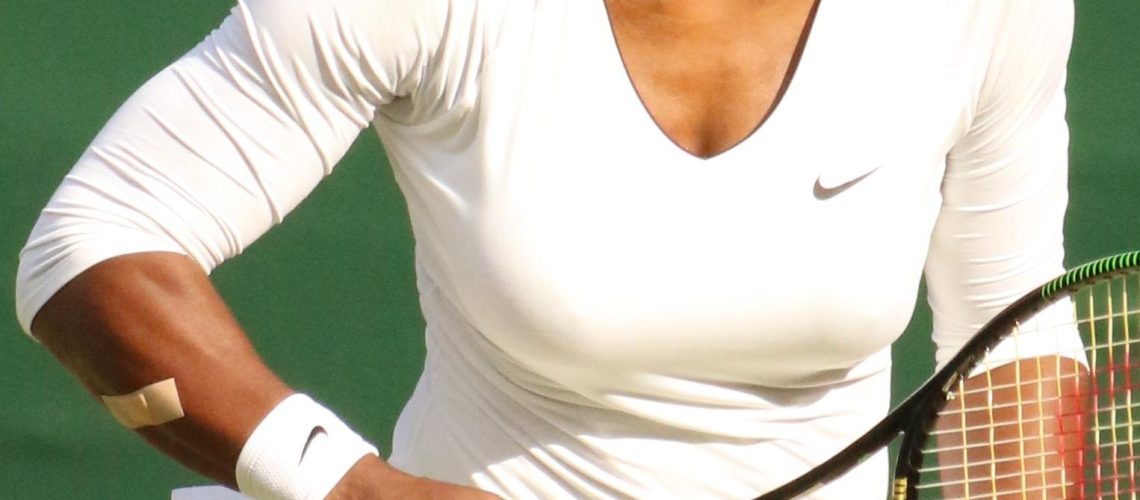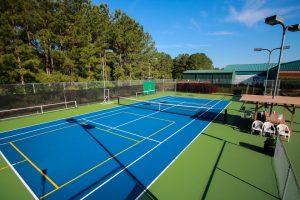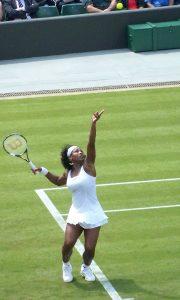We may earn money or products from the companies mentioned in this post.
Introduction to Forced Errors in Tennis

In the game of tennis, errors are an inevitable part of the sport They can occur due to various factors such as incorrect shot execution, lack of concentration, or strategic decisions One type of error commonly seen on the tennis court is the forced error
General definition of a forced error
A forced error in tennis refers to a situation where a player is compelled by their opponent’s skill and shot placement to make a mistake It occurs when an opponent’s aggressive play forces their rival into an unfavorable position or puts them under significant pressure, leading to an unforced mistake
For example, imagine a scenario where Player A hits a powerful and well-placed shot deep into Player B’s corner Player B is unable to retrieve the ball effectively and ends up hitting it out of bounds or into the net In this case, Player A has successfully forced Player B into committing an error through their superior shot quality
Significance of forced errors in tennis matches
Forced errors play a crucial role in determining the outcome of tennis matches They showcase not only the offensive capabilities but also the defensive prowess of players on the court The ability to force opponents into making mistakes can give players a significant advantage during gameplay
By strategically placing shots with precision and power, players can exploit weaknesses in their opponents’ game and increase their chances of winning points Forced errors put additional pressure on players who may already be struggling with confidence or struggling with fatigue, ultimately influencing match results
Comparison between unforced errors and forced errors
While both unforced errors and forced errors result in lost points for the player committing them, there are distinct differences between these two types of mistakes
Unforced errors occur when a player makes a mistake without any significant pressure from their opponent These errors are often attributed to lapses in concentration, technical flaws, or poor shot selection On the other hand, forced errors highlight the skill and tactics employed by the opposing player to induce mistakes
Unlike unforced errors, which can be frustrating and demoralizing for players, forced errors can sometimes be seen as a sign of respect towards the aggressor’s abilities They demonstrate that the opponent’s shots were so well-executed and strategically placed that they overwhelmed their rival
In conclusion, forced errors in tennis are an essential aspect of the game that showcases the skills and strategies employed by players on the court Understanding how to force opponents into making mistakes while minimizing unforced errors is crucial for success in this highly competitive sport
Factors leading to Forced Errors

In the game of tennis, forced errors can play a crucial role in determining the outcome of a match These errors occur when players are put under pressure by their opponents or external factors, causing them to make mistakes Let’s explore some of the key factors that contribute to forced errors on the tennis court
Opponent’s aggressive play and tactics
One significant factor leading to forced errors is the opponent’s aggressive play and strategic tactics When faced with an opponent who consistently employs powerful groundstrokes, it puts pressure on the other player to respond with equal intensity The sheer force behind these shots can force errors as players struggle to handle the pace and spin
In addition, well-placed serves can also lead to forced errors A serve that lands precisely in the corners or at awkward angles can make it challenging for the receiver to return effectively, increasing the likelihood of committing an error
Furthermore, net approaches and volleys can create immense pressure on opponents When players come forward aggressively towards the net, it forces their opponents into defensive positions and requires quick reflexes and precision in their responses This increased difficulty often results in more forced errors
Court conditions and external factors
The playing conditions on a tennis court also have a significant impact on forcing errors from players Weather elements such as wind or sun glare can disrupt a player’s rhythm and timing, making it difficult for them to execute their shots accurately
The surface type is another critical factor contributing to forced errors On grass courts, where footing may be less secure, players need exceptional footwork skills to maintain balance and control during rallies Clay courts offer slower ball speed but higher bounce levels, demanding adjustments in shot selection and technique
Lastly, crowd noise or distractions during a match can also lead to forced errors The pressure of playing in front of a large and vocal audience can affect a player’s concentration and focus, causing them to make unforced mistakes that they would otherwise avoid
In conclusion, forced errors in tennis occur due to various factors such as the opponent’s aggressive play and tactics, as well as court conditions and external elements Understanding these factors can help players anticipate and minimize their own forced errors while capitalizing on those of their opponents
Analyzing Forced Errors in Tennis Statistics

Tennis is a game of strategy, precision, and skill Every shot played on the court has its consequences, and one statistic that plays a crucial role in analyzing player performance is forced errors These are shots that are not directly caused by the opponent’s winners but rather by the pressure applied by their shots
The Importance of Tracking Forced Errors for Players and Coaches
For players and coaches alike, understanding a player’s strengths and weaknesses is essential for developing effective game strategies By tracking forced errors, they can identify areas where a player may be more prone to making mistakes under pressure This knowledge allows them to focus on improving those specific aspects of their game
Additionally, analyzing an opponent’s forced error count provides valuable insights into their tendencies Coaches can use this information to develop game plans that exploit these weaknesses and put additional pressure on the opponent
How Forced Error Statistics are Collected During a Match
Determining forced errors during a match involves various individuals and technologies working together seamlessly Chair umpires play a vital role in making judgment calls on whether a shot was forced or unforced Line judges also contribute by providing input on close calls near the lines
Furthermore, statisticians meticulously record every point, categorizing each error as either unforced or forced This data collection process ensures accuracy in evaluating players’ performances
In recent years, technology like the Hawk-Eye system has been introduced to tennis matches This advanced technology uses multiple cameras to track the trajectory of the ball accurately It aids in determining whether an error was indeed forced or due to other factors such as misjudgment or poor execution
The Impact of Forced Errors on Match Outcomes

Exploring the Correlation Between High Forced Error Count and Winning Probability
A high count of forced errors can significantly impact a player’s chances of winning a match When analyzing historical tennis matches, it becomes apparent that players with a higher forced error count tend to have a lower winning probability These errors often result in lost points, allowing opponents to gain an advantage
Moreover, forced error statistics play a crucial role in determining a player’s ranking points and success in Grand Slam tournaments Consistently minimizing forced errors can lead to improved rankings and increased opportunities for tournament victories
Strategies for Minimizing Forced Errors During Gameplay
To reduce forced errors during gameplay, players must focus on improving stroke technique and footwork A solid foundation in these areas helps players maintain control over their shots and execute them more accurately under pressure
Mental resilience is also key in minimizing forced errors Staying calm under pressure allows players to make better decisions and choose shots that are less likely to result in mistakes Developing mental strength through practice and mindfulness techniques can make a significant difference on the court
By analyzing forced errors, both players and coaches can gain valuable insights into performance patterns and develop effective strategies for improvement Whether it’s understanding strengths and weaknesses or identifying tendencies in opponents, tracking these statistics contributes to overall success on the tennis court
Useful Links

Forced Errors vs Unforced Errors (or How to Fight, Tennis …
forced error
What Is An Unforced Error In Tennis?
Unforced Errors in Tennis: How to Overcome?
FORCED VS. UNFORCED ERRORS – YouTube
Tennis Terminology – “Forced Error” – YouTube
What Is An Unforced Error In Tennis? Things to Know
The Unknown Statistic: The Forced Error
How is an UNforced error distinguished from a Forced error …
UNFORCED ERROR
Unforced error Definition & Meaning
5 Tips to Cut Down Your Unforced Errors
Unforced Error – What is an unforced error?
What is the definition of a forced error in golf?
Tennis FAQ: Common and Unforced Errors in Tennis
How to Win at Pickleball by Making Your Opponents …
What Is An Unforced Error In Tennis? Definition & Meaning …
A deep dive into the unforced error: an outdated, misleading …
Cut down on unforced errors – a simple tip for practicing …






